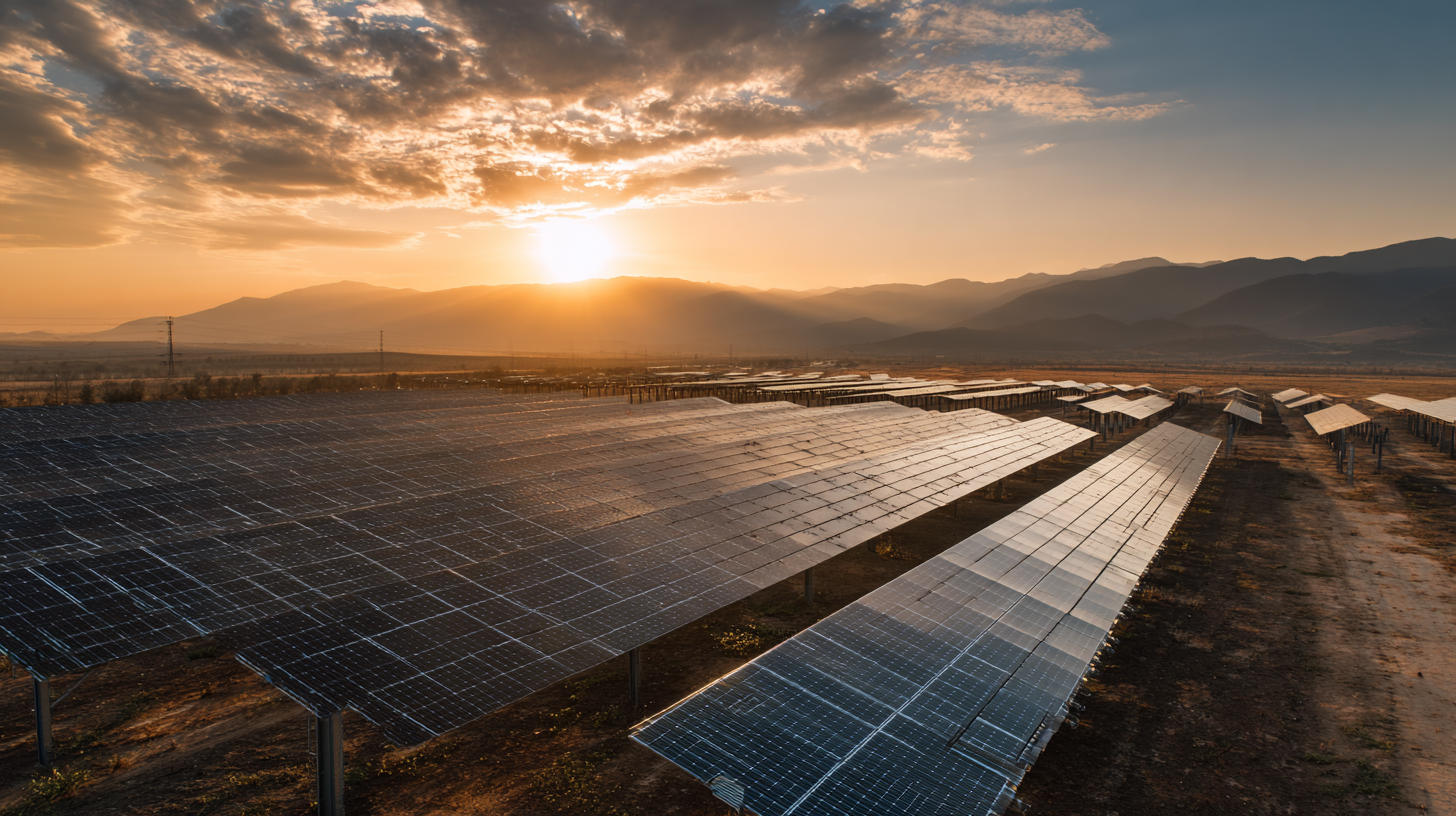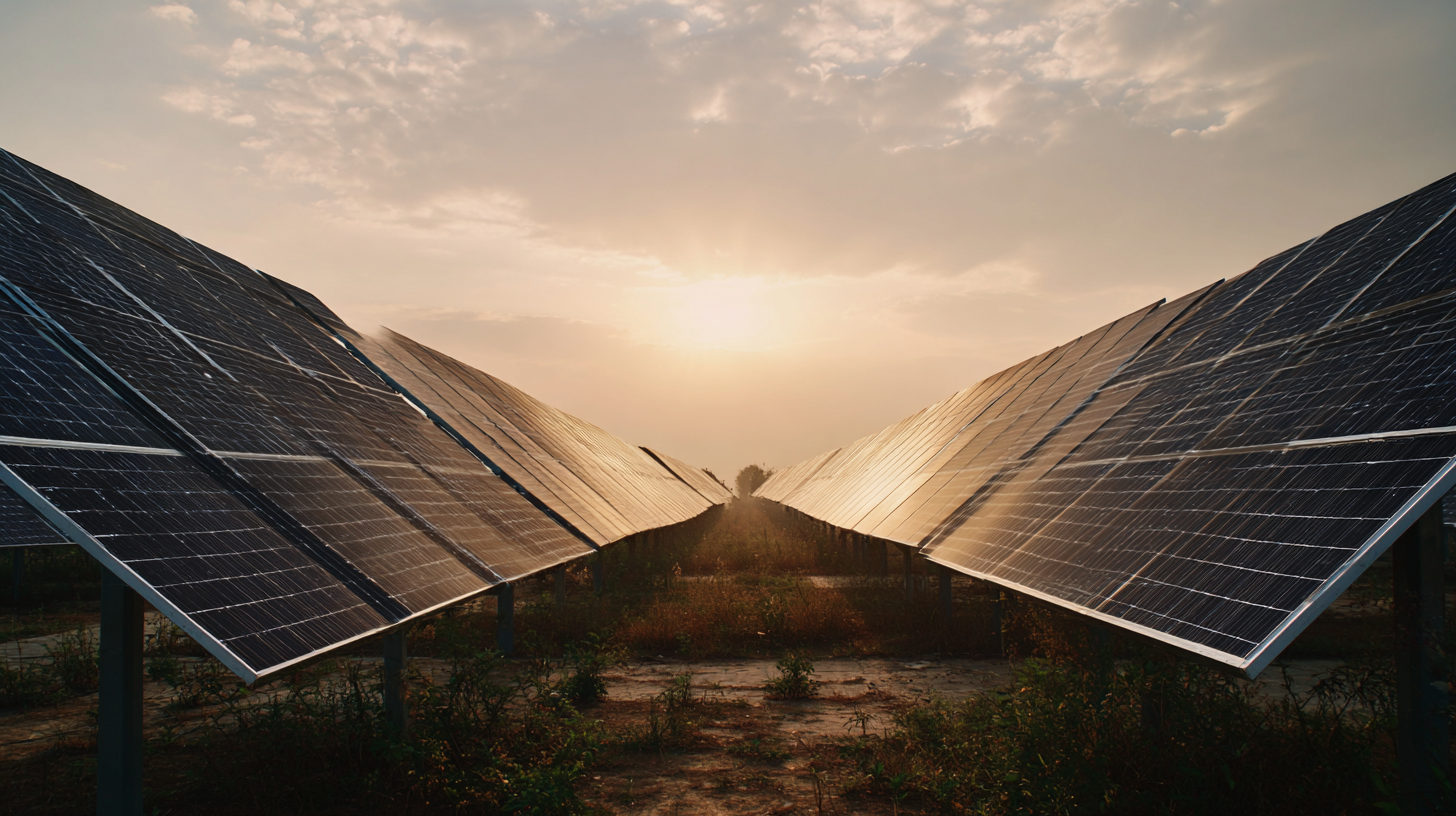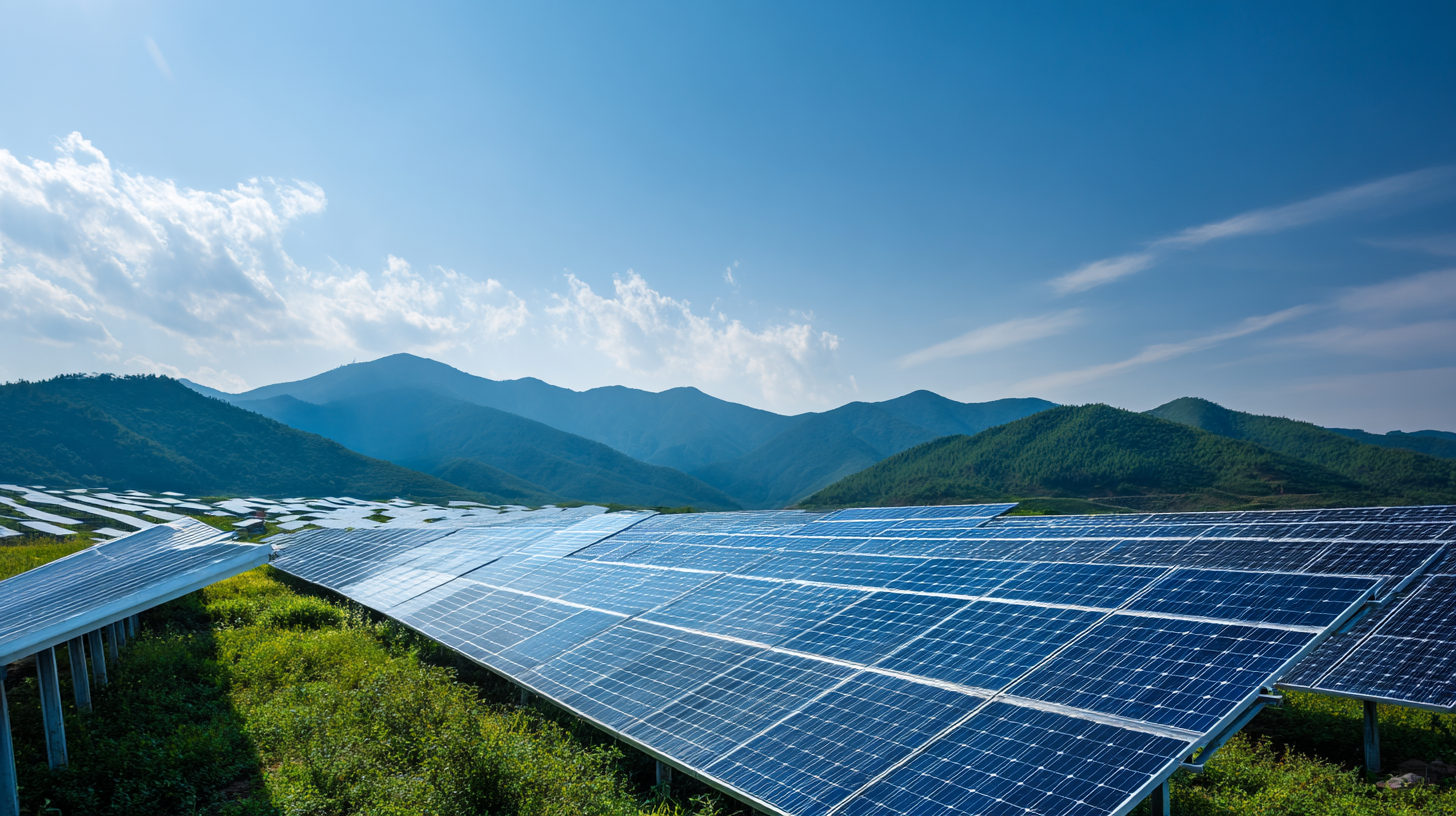MH Energy Your Better Solar and Energy Partner
Leave Your Message
MH Energy Your Better Solar and Energy Partner
 In an era where sustainable energy solutions are paramount, the spotlight is on China's remarkable advancements in the manufacturing of Solar Photovoltaic Cells. As the world grapples with the urgent need to transition to renewable energy sources, China's commitment to excellence not only enhances its manufacturing capabilities but also positions it as a leading provider of cutting-edge solar technology. This blog explores how China is elevating global standards in solar energy production through innovative techniques and quality assurance, ensuring that its Solar Photovoltaic Cells are synonymous with reliability and efficiency.
In an era where sustainable energy solutions are paramount, the spotlight is on China's remarkable advancements in the manufacturing of Solar Photovoltaic Cells. As the world grapples with the urgent need to transition to renewable energy sources, China's commitment to excellence not only enhances its manufacturing capabilities but also positions it as a leading provider of cutting-edge solar technology. This blog explores how China is elevating global standards in solar energy production through innovative techniques and quality assurance, ensuring that its Solar Photovoltaic Cells are synonymous with reliability and efficiency.
The phrase "卓越制造,源自中国,服务全球" captures the essence of this endeavor, reflecting a dedication to superior manufacturing that ultimately serves the entire globe. Join us as we delve into the intricate processes and sustainable practices that define China's impact on the solar industry and its contribution to a greener future.
China's solar photovoltaic industry has made remarkable strides in recent years, establishing itself as a global leader in innovative technologies. By investing heavily in research and development, Chinese companies have pioneered advancements in solar cell efficiency and production processes. Innovations such as bifacial solar panels, which can capture sunlight from both sides, and PERC (Passivated Emitter and Rear Cell) technology have significantly enhanced energy conversion rates. These breakthroughs not only improve energy output but also contribute to the reduction of manufacturing costs, making solar energy more accessible worldwide.
Furthermore, China is committed to sustainability and environmental stewardship. The integration of artificial intelligence and big data in the solar manufacturing process allows for optimized operations and improved quality control. This digital transformation enables companies to predict maintenance needs and reduce downtime, ensuring that solar photovoltaic cells are both reliable and efficient. As China's solar industry continues to evolve, it sets a benchmark for global standards in renewable energy, driving the transition towards a more sustainable future across the globe.
| Technology Type | Efficiency (%) | Annual Production (MW) | Innovation Year | Sustainability Rating |
|---|---|---|---|---|
| Monocrystalline | 22.5 | 15000 | 2021 | A+ |
| Bifacial | 24.0 | 12000 | 2022 | A++ |
| Polycrystalline | 18.5 | 10000 | 2020 | B |
| Thin-film | 16.0 | 5000 | 2019 | B- |
| Building-integrated | 20.0 | 3000 | 2023 | A |
In the pursuit of sustainable energy solutions, quality standards play a pivotal role in ensuring the effectiveness and reliability of solar photovoltaic cells. China's advancements in solar technology highlight the importance of maintaining high manufacturing standards to achieve not only efficiency but also longevity of solar products. By adhering to rigorous quality benchmarks, manufacturers can significantly increase the performance of solar panels, ultimately contributing to a greener planet.
Tips for selecting high-quality solar photovoltaic cells include looking for certifications from recognized institutions and ensuring that the products have undergone thorough performance testing. It's also beneficial to consider the manufacturer's reputation and history in the solar industry. A reliable manufacturer will often provide extensive warranties and support, indicating their confidence in the longevity and efficiency of their products.
Furthermore, it is essential to stay updated with the latest advancements in technology and innovations in solar energy. Engaging with industry leaders through forums and conferences can provide valuable insights into newly established standards and practices, enhancing your understanding of what constitutes a high-quality photovoltaic cell in today’s market.
This chart illustrates the increasing capacity and efficiency of solar photovoltaic cells produced in China over the last four years. The data reflects a steady growth in both kilowatt capacity and efficiency percentage, highlighting the focus on high-quality standards in sustainable energy solutions.
As the world pivots towards sustainable energy solutions, the competition in the solar photovoltaic (PV) cell market intensifies. A notable player, China, has emerged as a leader, enhancing global standards with its innovative and efficient solar technologies. According to the International Energy Agency (IEA), China's share of global solar cell production reached approximately 71% in 2022, highlighting the country's dominance and commitment to advancing renewable energy. This comparative analysis of global solar cell alternatives underscores the technological advancements that have contributed to the efficiency and cost-effectiveness of Chinese solar cells in relation to counterparts from Europe and North America, which in turn encourages global adoption of clean energy solutions.
Tips for comparing solar cell alternatives include assessing efficiency ratings, warranty lengths, and overall lifespan. For instance, while Chinese manufacturers often excel in producing high-efficiency monocrystalline panels, European brands frequently emphasize durbility with comprehensive warranties. The use of efficiency data, such as the fact that top-tier solar panels can exceed 22% efficiency, can guide consumers in making informed decisions by aligning their choices with long-term sustainability goals. Furthermore, considering installation costs alongside energy production potential can aid in determining the best option to meet specific energy needs.
When exploring solar cell options, it's crucial to evaluate manufacturer certifications and industry ratings. According to the Solar Energy Industries Association (SEIA), products with recognized certifications ensure compliance with safety and performance standards, which can translate to better return on investment. Conducting thorough research on performance benchmarks and reviewing case studies can empower consumers to seek out the most reliable technologies available in the market today.

As the world grapples with the pressing challenge of climate change, China is playing a pivotal role in reducing carbon footprints through its advanced solar photovoltaic (PV) technology. The country has rapidly emerged as a leader in solar energy production, contributing significantly to sustainable practices globally. By investing heavily in research and development, China has perfected the art of manufacturing solar cells that are not only efficient but also more environmentally friendly compared to traditional energy sources.

Chinese solar photovoltaic cells are engineered with the latest innovations, maximizing energy conversion and reliability. The widespread adoption of these technologies can significantly lower greenhouse gas emissions, making renewable energy more accessible and affordable. As countries strive to meet their climate goals, China's contributions to solar energy showcase a commitment to building a greener future. By exporting these exquisite solar solutions, China is not only enhancing its own energy security but also helping other nations reduce their reliance on fossil fuels and minimize their environmental impact.
The future of solar photovoltaic technology is rapidly evolving, with China emerging as a leader in the field. Innovations in solar cell efficiency and materials are setting new benchmarks that can drive global adoption of sustainable energy solutions. As Chinese manufacturers focus on enhancing the energy conversion rates of their photovoltaic cells, there are significant implications for both domestic and international markets. These advancements not only reduce the costs of solar energy but also contribute to long-term energy security and sustainability.
Looking ahead, trends suggest an increasing integration of artificial intelligence and smart technology with solar photovoltaic systems. This synergy can optimize energy production by predicting and adapting to varying weather conditions, thereby maximizing output. Additionally, as global initiatives aim for carbon neutrality, countries will increasingly look to China's state-of-the-art solar modules to power their green energy initiatives. The ripple effect of China's innovations will likely influence regulatory frameworks, investment patterns, and collaborative initiatives worldwide, further solidifying solar energy as a cornerstone of sustainable development.
